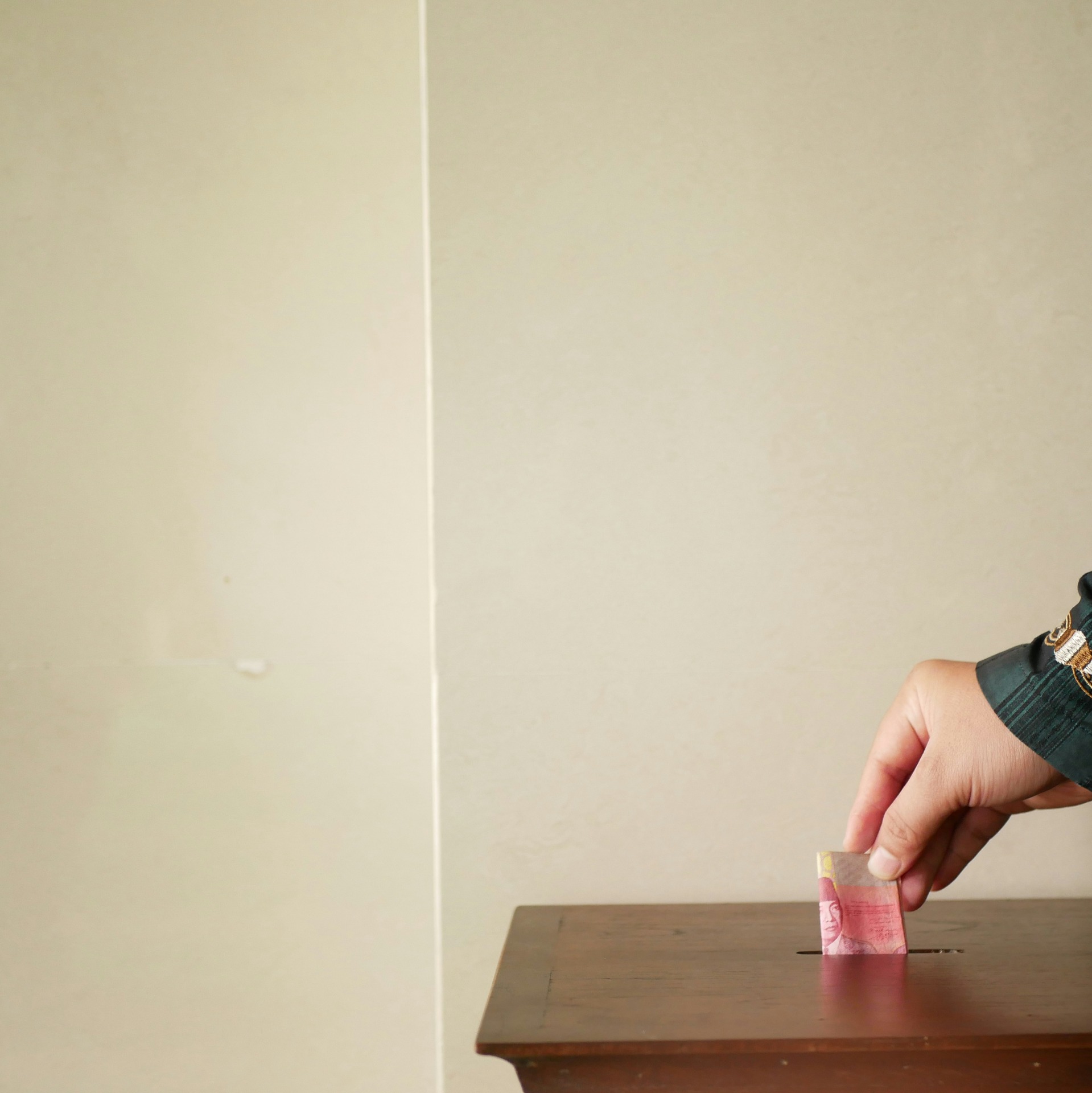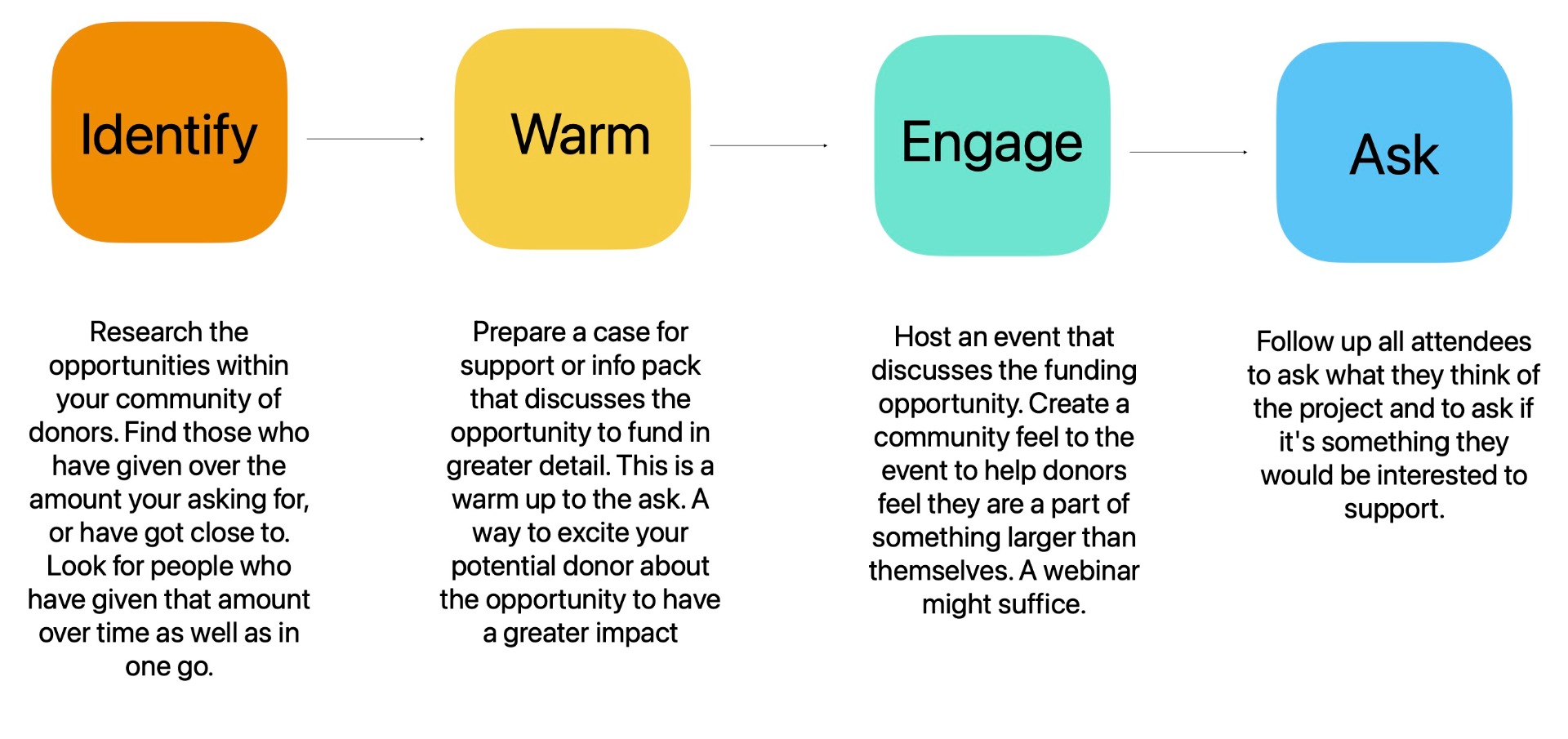
How to get Major Donors to make a major difference

An effective Major Donor program can be one of the most significant ways to increase your impact through fundraising. Initiating and growing your Major Donors requires less time and staff resource than many other types of fundraising, while growing your organisational revenue in a considerable way.
But for many small and new charities, knowing how to rollout a Major Gift program can be overwhelming. It might feel awkward to ask for money, or you might now know who to ask and when. You might feel that any time you have tried to ask for a large gift, it felt forced and not like you
If this sounds like you or your organisation - I'd love to help!
I've developed a very simple, 4-step strategy to help you plan your Major Donor program. It helps you understand who you need to talk to, gives a structure for the groundwork needed to develop a solid key ask message and empowers you to ask for the gift in a way that feels organic to you and your donor.

Let me talk you through it in further detail:
Identify: This is the data analysis part of the strategy. By taking the time to review the data about your past donations, you will develop a list of donors who you can confidently engage with. Set the amount your organisation defines as a Major Gift. This changes depending on the organisation, so it might be $1,000 or $5,000, or upwards of $20,000. Once you've determined what a Major Gift is for you, it's time to investigate who in your database has donated close to that amount in the last 3-5 years.
It doesn't need to be a once off gift either. If someone has donated that amount over the course of a year, it is well worth including them in your pipeline. Be careful not to be too broad with who you include however - by making an ask that a donor feels is too large, you might deter them from making a donation that they are comfortable with.
There is a place for those mid-level givers and that is your Regular Giving program which we will chat about in another post.
Once your list is developed, it's time to plan the project you're seeking funding for.
Warm: To ensure success when it's time to make an ask for a major gift, it's important to lay the groundwork by creating a strong ask. You can do this by selecting a project or fund you're raising money for, then create a case for support to talk about that project some more. Your case for support can be emailed or posted to your community to help build trust and interest. This is not a piece of collateral where you ask for a gift; it's written in more of a newsletter or regular update style. The idea is to generate intrigue or inspiration with your community. It helps them realise your organisation needs specific support and they start to consider how they can get involved in that project.
You can create your website at this time as well with more information. Tell the story of your project with testimonials, photos and impact stories from your community. Make sure you answer the questions: What is the problem/What is the solution/Why is your organisation uniquely able to provide the solution.
Engage: Once you've sent your case for support to your community, it's time to follow up and build your connection with them. By hosting an event - it could be in-person or a webinar - you create an opportunity to build further interest in your organisation, the project and the solution you're offering.
You could call this event a launch of your project, a information event or a community event. This purpose of it is to invite your community to ask their questions or bring their own interest to the project. You provide more information, but also importantly show your community that the power of their support is amplified when they combine with others to achieve the desired outcome.
It's recommended to give that collective power of donors a name to come together under. Circle of Support, Future Fund, Circle of Hope, Heroes, Allies, Advocates, or get creating with something that resonates with your cause.... By creating the name of your community, it gives your donors a sense that they are a part of something bigger and meaningful - and that their support is appreciated.
Ask: Making an ask of a donor can be a scary prospect. But if you've followed the three steps above, it should be a lot less daunting and actually quite natural. You should feel confident to call a potential donor and ask them, in a very conversational way;
- What did they think of the project and information provided?
- What was their feedback on the event - did they enjoy it and learn something new?
- Are you interested in supporting the project by making a donation of $X amount?
Before making the phone call, practise this conversation with a colleague or friend so it feels natural. And make sure you have a dollar figure in mind that you're going to ask for. This amount should be a little bit higher than the average of their previous gifts so it's still an upgrade, but not too much higher than previous gifts.
Utilising your giving fund name can also be useful - for example "Are you interested in making a donation of $5000 to support the project and become a Circle of Hope Gold Member?"
Does that feel more achievable to you when laid out in this process? I hope this information gives you more confidence to create your own Major Giving process. I'd love to hear from you if you give it a go and have any questions along the way.
Of course, you can always utilise my Fundraising Coaching or Consulting services to support your team to make your first Major Gift ask. Book an free chat with me here to discuss your organisational goals and to see if I can help you.